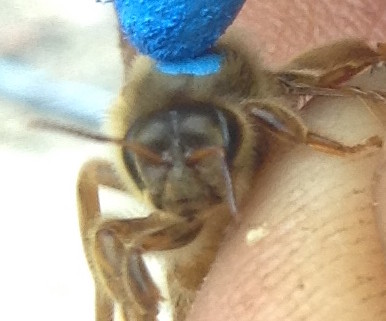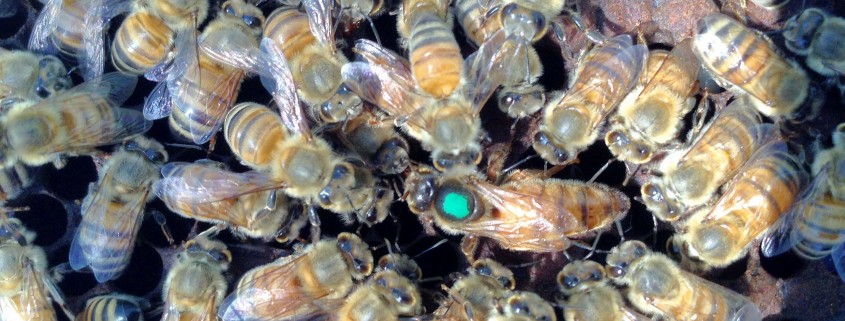The Composure Of A Well-Mated Queen Bee
Near the end of this season we managed to capture a close up photo of a rather calm looking queen as she paid a visit to the “tattoo parlor” for her blue mark. There is something peaceful about the mannerisms of a well-mated queen bee. She exudes a sense of composure, which can practically be seen in the above photo.
This sense of calm is also noticeable inside the hive as a well-mated queen bee moves purposefully and calmly across the combs, laying her eggs in a meticulous circular pattern. The other worker bees carefully surround her, gently touching her with their antennae to connect with her queen pheromone.
In handling a queen bee, as long as she is treated with care and respect, the queen typically will take her handling in stride, hardly putting up a fuss as she is given her color mark or placed inside a temporary cage for transport. At times when we gently grasp a mated queen bee by her thorax or wings for marking (here by her legs), it feels like she is holding hands with us!
In handling countless tens of thousands of queens, to the best of our knowledge, no queen bee has ever attempted to sting any of us at Wildflower Meadows. Although queen bees have a stinger, and theoretically can sting humans, they almost never do. Instead, they reserve their sting – which is as potent as any other worker bee – for their traditional enemies: other queen bees.




